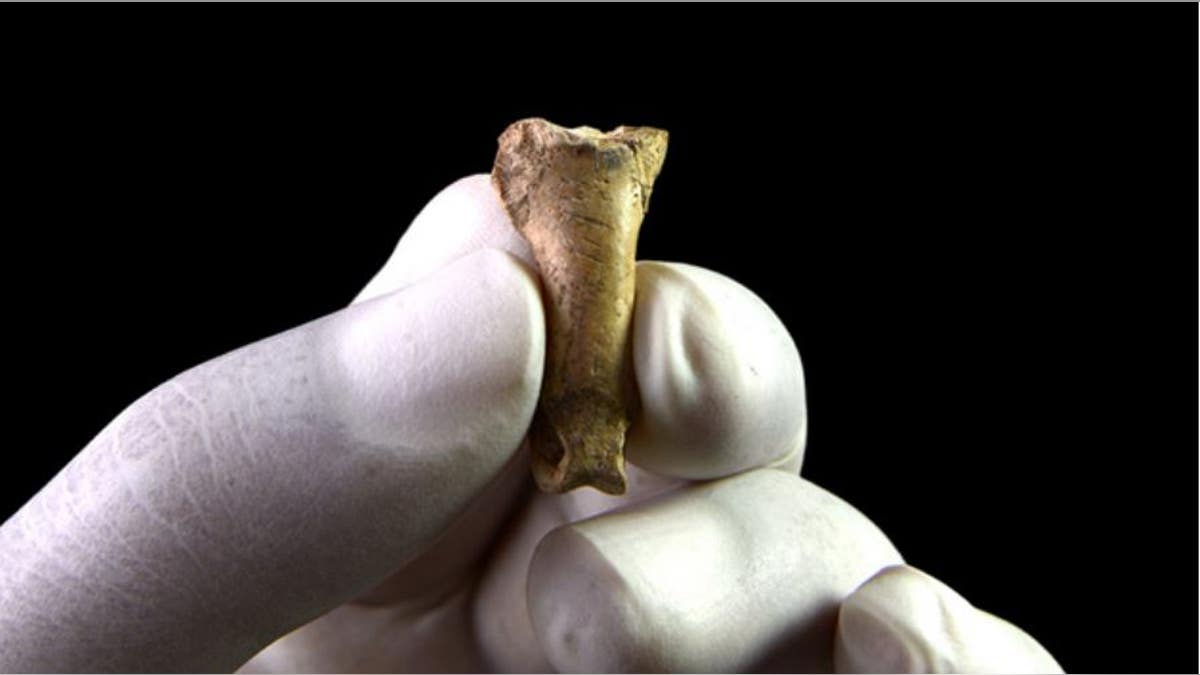Fox News Flash top headlines for Nov. 1
Fox News Flash top headlines for Nov. 1 are here. Check out what's clicking on Foxnews.com
The toe bone of a 39,000-year-old eagle suggests that Neanderthals made pendants and ornaments from the birds' talons.
Excavations in Foradada Cave, not far from northeastern Spain's Mediterranean coast, produced the ancient imperial eagle toe fossil, according to a study published on Friday.

An American bald eagle carries a freshly caught fish at Mill Pond on August 10, 2018 in Centerport, New York. (Getty Images)
Stone tool marks on the bone were likely made when someone removed a talon from the bird's foot, according to archaeologist Antonio Rodriguez-Hidalgo of Madrid's Institute of Human Evolution in Africa and his colleagues.
As Science News reports, no signs of burned sediment or cooking areas turned up, which suggests that the birds were captured for their talons and not as food.

The eagle toe bone seen above bears stone tool markings that indicate Neandertals made body ornaments out of talons, a study concludes. (A. R. Hidalgo)
The researchers discovered a total of 12 bones from imperial eagles and other birds of prey, which included seven toe bones and one talon.
The study was published in Science Advances.
